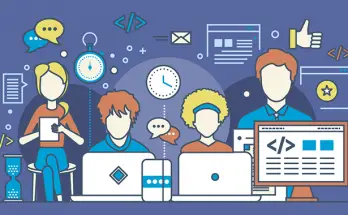Software modernization is the transfer of data from an old system to a new one in order to update the architecture, underlying technology and design. This is necessary to speed up and improve the security of the company's internal processes, and to debug uninterrupted connections with partners for the transfer of business data.
Legacy systems are often critical to the operation of most businesses. Deploying an upgraded system will immediately increase operational risk. Therefore, we are modernizing gradually. When we do preliminary analysis, the system is completely legacy code. We then proceed to integrate the updates step by step and test them until the update is ready.
This allows the company to remain fully operational during the legacy modernization period.
How does the modernization process go
First of all, we analyze the current bespoke software and the value of the company. We then compare the current quality of the software and the potential budget to develop a plan for the positive change that will come from the software update.
Next, we proceed with the step-by-step implementation:
- Conducting a conference with your IT staff. Developers, programmers, system administrators, testers, and other employees.
- Determining the exact upgrade requirements. They are divided into 4 categories: what users need, what the system needs, what limitations have arisen due to obsolescence, and what necessary functions are not yet used.
- Creation of a business case for the upgrade. So that the allocated budget as a result of the renewal can ensure the growth of the necessary indicators.
- Study of the architectural design of the program. Often, several teams take part in the development, the documentation is significantly outdated, and sometimes it takes time to understand the code. Before you start upgrading, you need to have a thorough understanding of your current system.
- Approval of the target technology.
- Building a modernization strategy. Sometimes a full update does not take place immediately, and the system must maintain performance on a daily basis. To do this, we develop a plan, together with the management and employees of your company, how to implement and test updates as efficiently as possible, without disrupting the usual pace of work.
- Estimation of the project cost. When all the steps have been passed, we can determine the required budget. Next, the management needs to determine whether it is rational to carry out the upgrade, taking into account the available resources and the course of development.
Globally recognized modernization strategies
The most expensive way to upgrade is not to do it at all.
The outdated perception of an update is often limited to two options:
- A revolutionary method - when the system is completely turned off during the upgrade and returns to work only after complete completion. Very often, after a long downtime and turning on, albeit a new version, a lot of errors and conflicts with other systems in the network and partners pop up. For repeated "repair" it is necessary to turn off the system again, which causes significant damage to the economy and the reputation of the company.
- An evolutionary method is a step-by-step upgrade process that often does not carry great risks and does not affect the stability of business processes. However, very often it turns into a “bandage method” when developers begin to focus on solving problems that have arisen, rather than their root causes. As a result, the company is slowly but surely spending the budget on the renovation only to get programmers to work more actively with buckets in an attempt to pump water out of the wrecked ship.
Conclusions
That's it, at least for now: we hope that this high-level analysis of software modernization of legacy systems will help many CEO, CTO, CISO and Business Owners to make the right choice.



